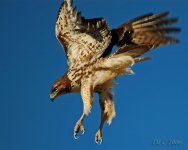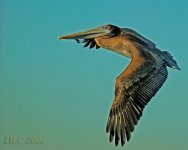Bonsaibirder
http://mobro.co/saddinall
Interesting stuff Max. I am a birder who's just bought a decent camera/lens combination so I have never been in the mindset of planning photos. This might explain some of my results!
Hello Steve, thank you for your appreciation.
As soon as I can, since my RAWs are stored at home, I'll bring them here in my office and upload .. in any case, if the shot is good from the start, there's no night-and-day difference between the two of them: I apply just a small amount of sharpening, and take care of blurring the background when possible.
Apparently there's no easy solution to the problem mentioned: it's a structural limit.
I find quite cumbersome switching the AF/MF button, aim and switch again... usually there's no time enough to do that (or I'm not that good at it); it works for static subjects though, especially when there are twigs and branches in between, making AF struggle.
What I usually do is aiming at the point where I expect the subject coming (usually infinite) and focus on a nearby object: in this way, I'm quite prepared and need only fine tuning; it goes withouth saying that you MUST know your spot, understand what your most frequent opportunities are and CHOOSE what your next subject will be ... Murphy's Law always applies here, when I set my rig for a wader in the mudflat, a raptor appears over the reedbed, when I wait for a seagull diving in the pond, a wren pops up foraging on the ground .. that's the funny part of our hobby! :-O
As for flight shots, I try to be as precise as possible, I wait for the subject to be quite close and autofocus ONLY when the focus point IS on the subject (and TRY to keep the focus on it), so a good panning technique is quite useful ... or, if the bird is flying, say, from left to right, I quickly anticipate it and AF on an object roughly on the same plane, then come back on the subject.
As you can see, there's no one single recipe for any situation, except buying a FMF lens... just kidding, I do believe that lots of practice make life easier ...
Cheers,
Max





